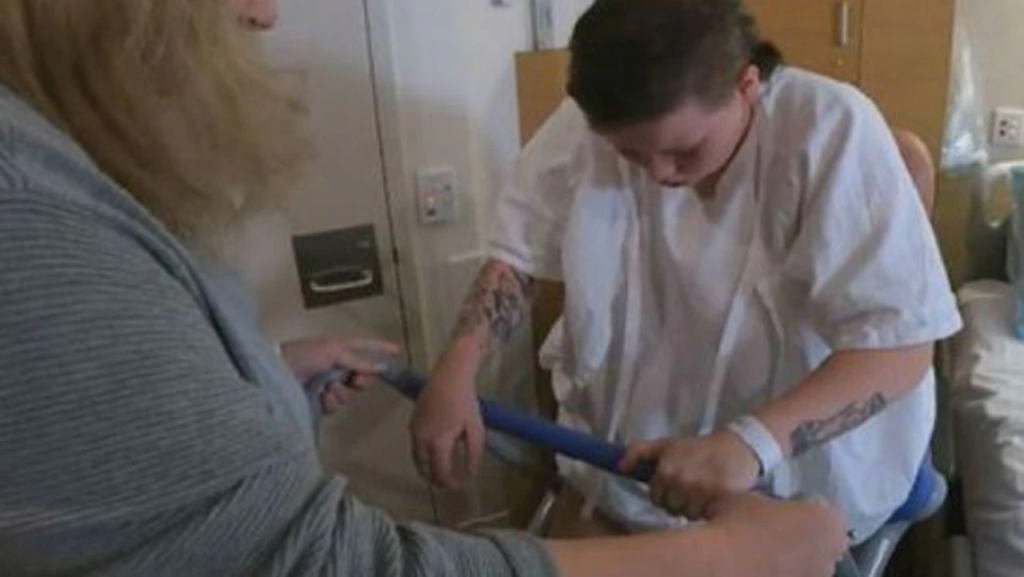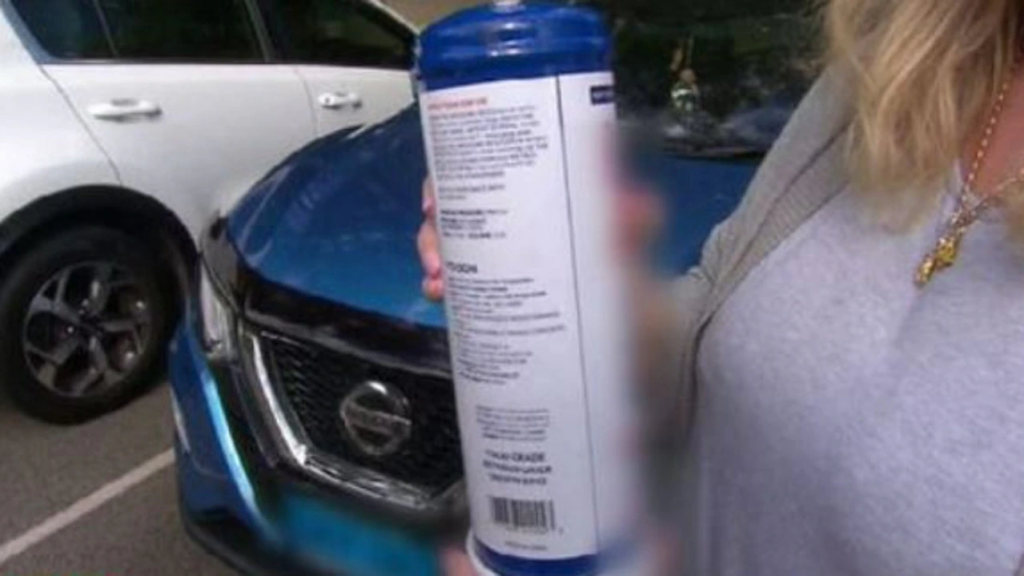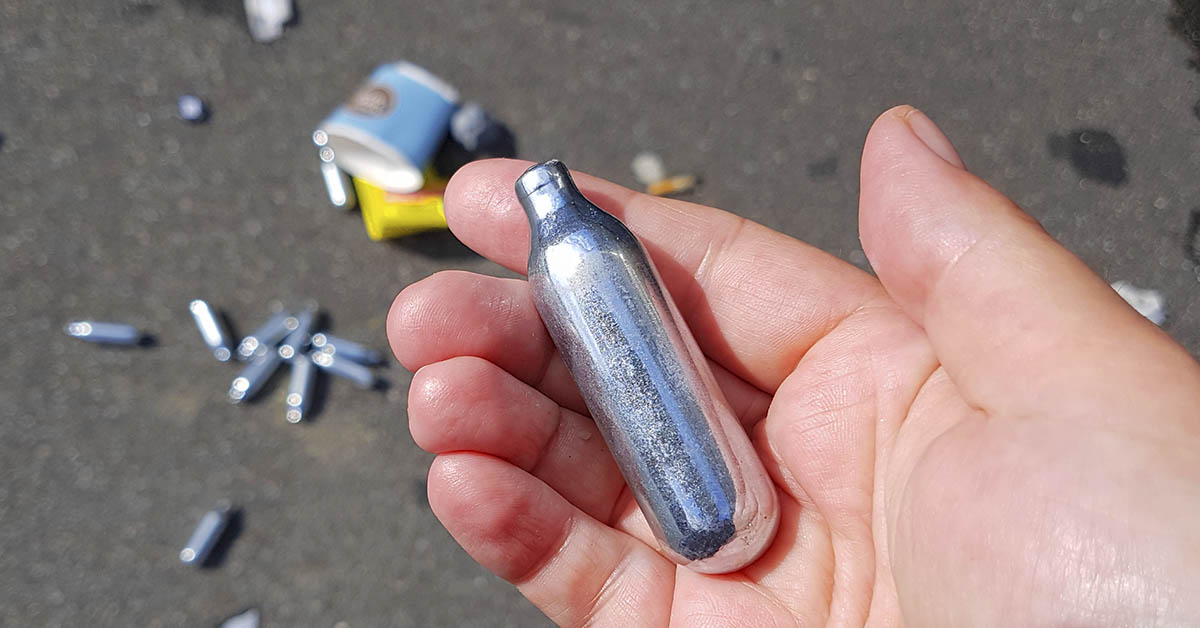A teenager from Perth is facing the possibility of never walking again. Molly Day, a 19-year-old, disclosed that her addiction to laughing gas canisters, commonly known as ‘nangs’ has reached a point where she now requires assistance for basic activities. These include eating, walking, and showering.

This addiction to nangs took hold shortly after her high school graduation
Molly’s addiction quickly escalated, with her daily consumption of two liters of gas. “I became addicted very rapidly, and I couldn’t control the urge. Once I finished one, I craved more and more,” she explained. “Two weeks ago, I was a healthy young woman capable of walking and taking care of myself. Now, I’m completely dependent. I’ve lost my ability to walk, and I have no control over anything. It’s incredibly dangerous.”

The West Australian government implemented new laws last year in response to the issue. These were implemented to restrict the sale of nitrous oxide gas canisters. However, Molly’s mother, Nicky Day, believes that more action is necessary.
Nicky discovered over 30 three-liter canisters in her daughter’s room before Molly was admitted to the hospital. “The government needs to wake up and take action. This is completely unacceptable. It should not be possible for a 16-year-old to easily obtain these substances,” she asserted.

It was thought that nangs was a safe-to-consume drug, but that couldn’t be further from the truth
While nitrous oxide, commonly known as nangs, is often considered a “safe” drug, experts from the National Drug and Alcohol Research Centre (NDARC) at UNSW Sydney assert that this belief is far from accurate, as long-term usage can result in brain and nerve damage.
Alarmingly, the number of Australians engaging in nang use, particularly at clown parties, is on the rise. The Australian Institute of Health and Welfare (AIHW) reported in their National Drug Strategy Household Survey that the prevalence of inhalant use, including nitrous oxide, increased from 0.4 percent in 2001 to 1.7 percent in 2019.
Furthermore, a recent study published by the National Institutes of Health revealed a significant surge in cases related to nitrous oxide use in emergency departments across NSW. The number of such cases rose from less than 10 in 2012 to over 60 in 2018. Dr. Rachel Sutherland, Deputy Program Lead of Drug Trends at NDARC, highlighted that misconceptions about the drug could contribute to its growing popularity.
She stated, “Determining the precise reasons for the increased use or popularity of a particular drug is always challenging. However, it could potentially be linked to perceptions of safety.” Dr. Sutherland emphasized that nitrous oxide is readily available, as it can be easily purchased at convenience stores or online, and its affordability adds to its accessibility.
Read: Mom shares grave warning to parents after finding teen son dead at his desk
There have been multiple reports of deaths related to the drug’s usage
Recent media coverage has connected the use of nangs to a tragic incident at the Gold Coast’s schoolies week. Where a teenager named Hamish Bidgood lost his life after falling from a balcony. According to reports, Bidgood and his friends had allegedly been engaging in the use of nangs on that particular day.
While the recreational use of nitrous oxide rarely leads to overdoses, it is important to note that it can still impact coordination and judgment. Overdose-related deaths associated with nitrous oxide have been reported in the United Kingdom and the United States. However, as of our knowledge, there have been no reported overdose deaths linked to nitrous oxide use in Australia.
Popular all over social media, kids are unashamed of their nangs use
According to The Conversation, recent media reports have highlighted a supposed “nang epidemic.” According to one newspaper, schoolies have been purportedly spending substantial amounts of money on nitrous oxide. However, this story appears to be primarily based on a single Facebook post where an alleged school leaver claimed to have spent a staggering amount of A$49,000 on nangs, which would equate to approximately 49,000 bulbs. It is highly probable that this individual exaggerated their claims for the sake of their Facebook audience.
But does banning a drug truly solve the problem?
Studies have shown that when a drug receives extensive media attention, public interest in it tends to reach its peak. Furthermore, restricting access to a substance can often result in an upsurge in its use. Prohibiting drugs does not guarantee the prevention of their use, and it can even lead to the emergence of more hazardous unregulated alternatives.
A notable historical example is the Prohibition of alcohol in the 1920s, which only fueled the demand for illicit sources that produced high-alcohol content beverages containing harmful impurities. These illicit products caused severe health consequences such as blindness, paralysis, and even death. Therefore, implementing a ban on nitrous oxide can potentially cause more harm than it aims to prevent. Additionally, it may disappoint enthusiasts of whipped cream, as they would be affected as well.
Keep Reading: Couple arrested after 10-year-old son, weighing 36 pounds, found searching for food: report
Sources
- “Brit teen was lured to death by drug dealer who set up honeytrap, dad claims.” Lad Bible. Charisa Bossinakis. May 14, 2023.
- “Explainer: what is nitrous oxide (or nangs) and how dangerous is it?.” The Conversation. Stephen Bright and Nicole Lee. December 3, 2018.

